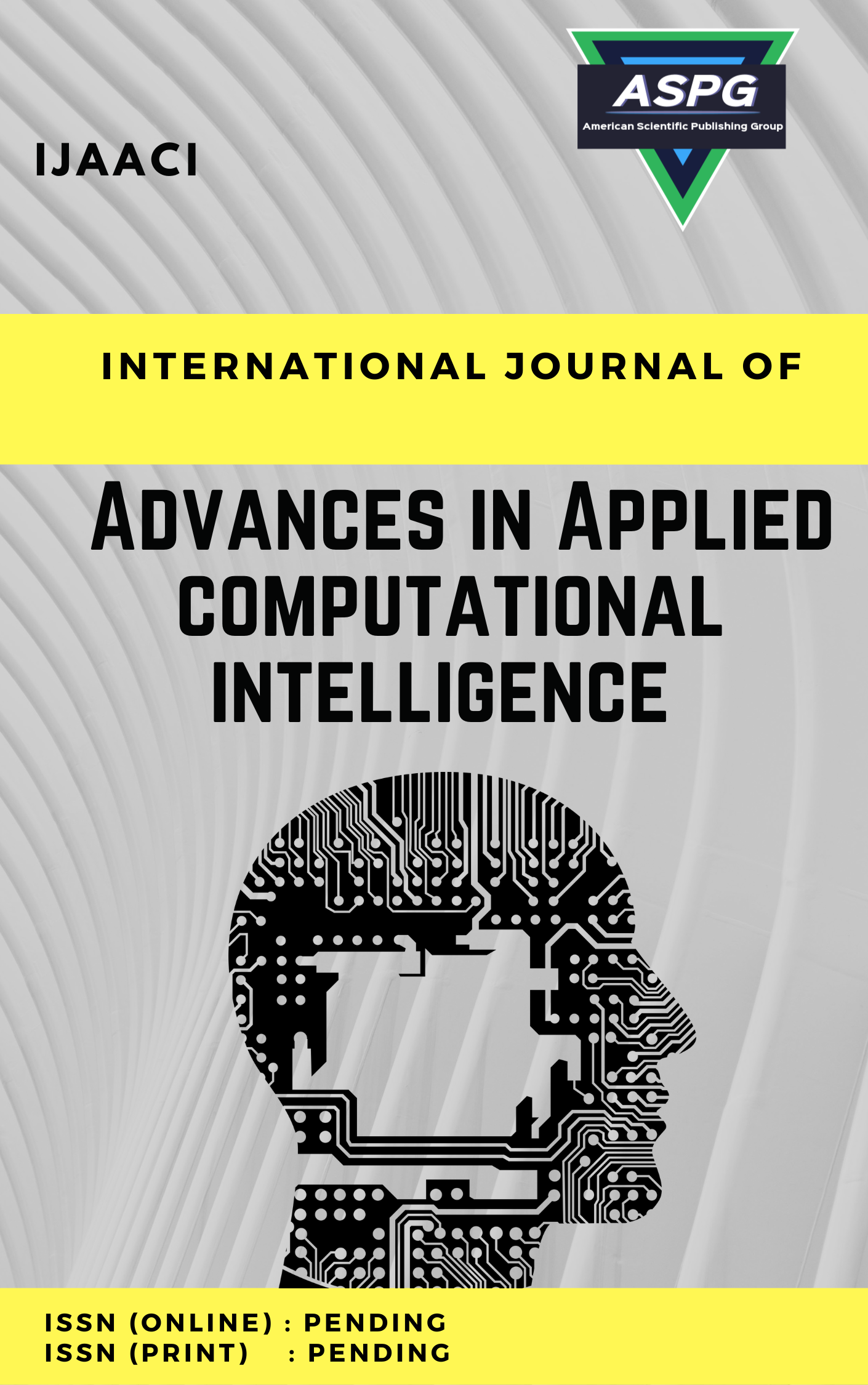

Volume 6 , Issue 2 , PP: 73-82, 2024 | Cite this article as | XML | Html | PDF | Full Length Article
Ahmed Hatip 1 * , Karla Zayood 2 , Rabah Scharif 3
Doi: https://doi.org/10.54216/IJAACI.060207
A capability that is indispensable in robotic navigation when it comes to planning paths through dynamic and uncertain environments efficiently and accurately. This work aims at a hybrid stochastic-deterministic path planning by combining the best of both worlds in order to improve robotic navigation. This hybrid model uses stochastic techniques to employ the robustness of uncertainly models, but offers efficient execution with deterministic algorithms for our optimum path solution. The method combines a highly exploratory stochastic sampling-based planner for environmental search with a deterministic optimization component that refines paths generated by the former, enforcing constraints such as minimal traversal distance (energy efficiency), while avoiding obstacles. The integration of those methods targets to override the disadvantages that each purely stochastic or solely deterministic model required, giving a more flexible and robust solution for autonomous vehicle guidance. We use simulation analysis and real-life experimental data to validate the algorithm in comparison with traditional algorithms. The approach performs significantly better, up to an order of magnitude in terms of accuracy and efficiency on navigation as well as robustness against cluttered or dynamic disturbances. These results indicate that the proposed hybrid stochastic-deterministic path-planning algorithm has strong potential to contribute to improving autonomy of robotic navigation systems, especially in highly dynamic and precise applications. The post provides a new framework to improve autonomous navigation of robots for complex environments that can support more efficient, reliable and high-level robotic systems in industrial, household or exploratory settings.
Hybrid Path Planning , Stochastic-Deterministic Navigation , Robotic Navigation , Autonomous Systems , Path Optimization , Obstacle Avoidance , Dynamic Environments , Stochastic Sampling , Deterministic Optimization , Robotic Systems , Computational Efficiency , Navigation Accuracy
[1] Klančar, G., & Seder, M. (2022). Coordinated multi-robotic vehicles navigation and control in shop floor automation. Sensors, 22(4), 1455.
[2] Dolgov, D., Thrun, S., Montemerlo, M., & Diebel, J. (2010). Path planning for autonomous vehicles in unknown semi-structured environments. The international journal of robotics research, 29(5), 485-501.
[3] Bijjahalli, S., Sabatini, R., & Gardi, A. (2019). GNSS performance modelling and augmentation for urban air mobility. Sensors, 19(19), 4209.
[4] Han, C., Wang, Y., Li, Y., Chen, Y., Abbasi, N. A., Kürner, T., & Molisch, A. F. (2022). Terahertz wireless channels: A holistic survey on measurement, modeling, and analysis. IEEE Communications Surveys & Tutorials, 24(3), 1670-1707.
[5] Çatal, O., Leroux, S., De Boom, C., Verbelen, T., & Dhoedt, B. (2020, October). Anomaly detection for autonomous guided vehicles using bayesian surprise. In 2020 IEEE/RSJ International Conference on Intelligent Robots and Systems (IROS) (pp. 8148-8153). IEEE.
[6] Shani, G., Pineau, J., & Kaplow, R. (2013). A survey of point-based POMDP solvers. Autonomous Agents and Multi-Agent Systems, 27, 1-51.
[7] Hasbulah, M. H., Jafar, F. A., & Nordin, M. H. (2019). Comprehensive review on modular self-reconfigurable robot architecture. Int. Res. J. Eng. Technol, 6(4), 1317-1331.
[8] Poudel, S., & Moh, S. (2022). Task assignment algorithms for unmanned aerial vehicle networks: A comprehensive survey. Vehicular Communications, 35, 100469.
[9] Han, X. (2023). A novel assimilated navigation model based on advanced optical systems (AOS), internet of things (IoT) and artificial intelligence (AI). Optical and Quantum Electronics, 55(7), 655.
[10] Lei, L., Tan, Y., Zheng, K., Liu, S., Zhang, K., & Shen, X. (2020). Deep reinforcement learning for autonomous internet of things: Model, applications and challenges. IEEE Communications Surveys & Tutorials, 22(3), 1722-1760.
[11] Jenkins, N. W., Parrish, J. M., Sheha, E. D., & Singh, K. (2021). Intraoperative risks of radiation exposure for the surgeon and patient. Annals of Translational Medicine, 9(1).
[12] Abbaszadeh Shahri, A., Khorsand Zak, M., & Abbaszadeh Shahri, H. (2022). A modified firefly algorithm applying on multi-objective radial-based function for blasting. Neural computing and applications, 1-17.
[13] Wei, K., Dijkstra, T. M., & Sternad, D. (2008). Stability and variability: indicators for passive stability and active control in a rhythmic task. Journal of neurophysiology, 99(6), 3027-3041.
[14] Graham, R., & Cortés, J. (2010, June). Spatial statistics and distributed estimation by robotic sensor networks. In Proceedings of the 2010 American Control Conference (pp. 2422-2427). IEEE.
[15] Annamalai, A., Motwani, A., Sharma, S. K., Sutton, R., Culverhouse, P., & Yang, C. (2015). A robust navigation technique for integration in the guidance and control of an uninhabited surface vehicle. The Journal of Navigation, 68(4), 750-768.
[16] Poljak, D., Sesnic, S., Cvetkovic, M., Susnjara, A., Bonnet, P., El Khamlichi Drissi, K., ... & Paladian, F. (2019). On the Various Applications of Stochastic Collocation in Computational Electromagnetics. Uncertainty Modeling for Engineering Applications, 135-155.
[17] B. Narasimha Swamy, Rajeswari Nakka, Aditi Sharma, S. Phani Praveen, Venkata Nagaraju Thatha, Kumar Gautam, An Ensemble Learning Approach for detection of Chronic Kidney Disease (CKD), Journal of Intelligent Systems and Internet of Things, Vol. 10 , No. 2 , (2023) : 38-48 (Doi : https://doi.org/10.54216/JISIoT.100204)
[18] Benjamin Afotey, Christina Lovely-Quao, Ambient air pollution monitoring and health studies using low-cost Internet-of-things (IoT) monitor within KNUST Community, Journal of Intelligent Systems and Internet of Things, Vol. 10 , No. 2 , (2023) : 49-62 (Doi : https://doi.org/10.54216/JISIoT.100205)
[19] Lisha Yugal, Suresh Kaswan, B. S. Bhatia, Aditi Sharma, IoT-based Emulated Performance Evaluation NLP Model for Advanced Learners in Academia 4.0 and Industries 4.0, Journal of Intelligent Systems and Internet of Things, Vol. 10 , No. 2 , (2023) : 36-75 (Doi : https://doi.org/10.54216/JISIoT.100206)
[20] A. Yuva Krishna, K. Ravi Kiran, N. Raghavendra Sai, Aditi Sharma, S. Phani Praveen, Jitendra Pandey, Ant Colony Optimized XGBoost for Early Diabetes Detection: A Hybrid Approach in Machine Learning, Journal of Intelligent Systems and Internet of Things, Vol. 10 , No. 2 , (2023) : 76-89 (Doi : https://doi.org/10.54216/JISIoT.100207)